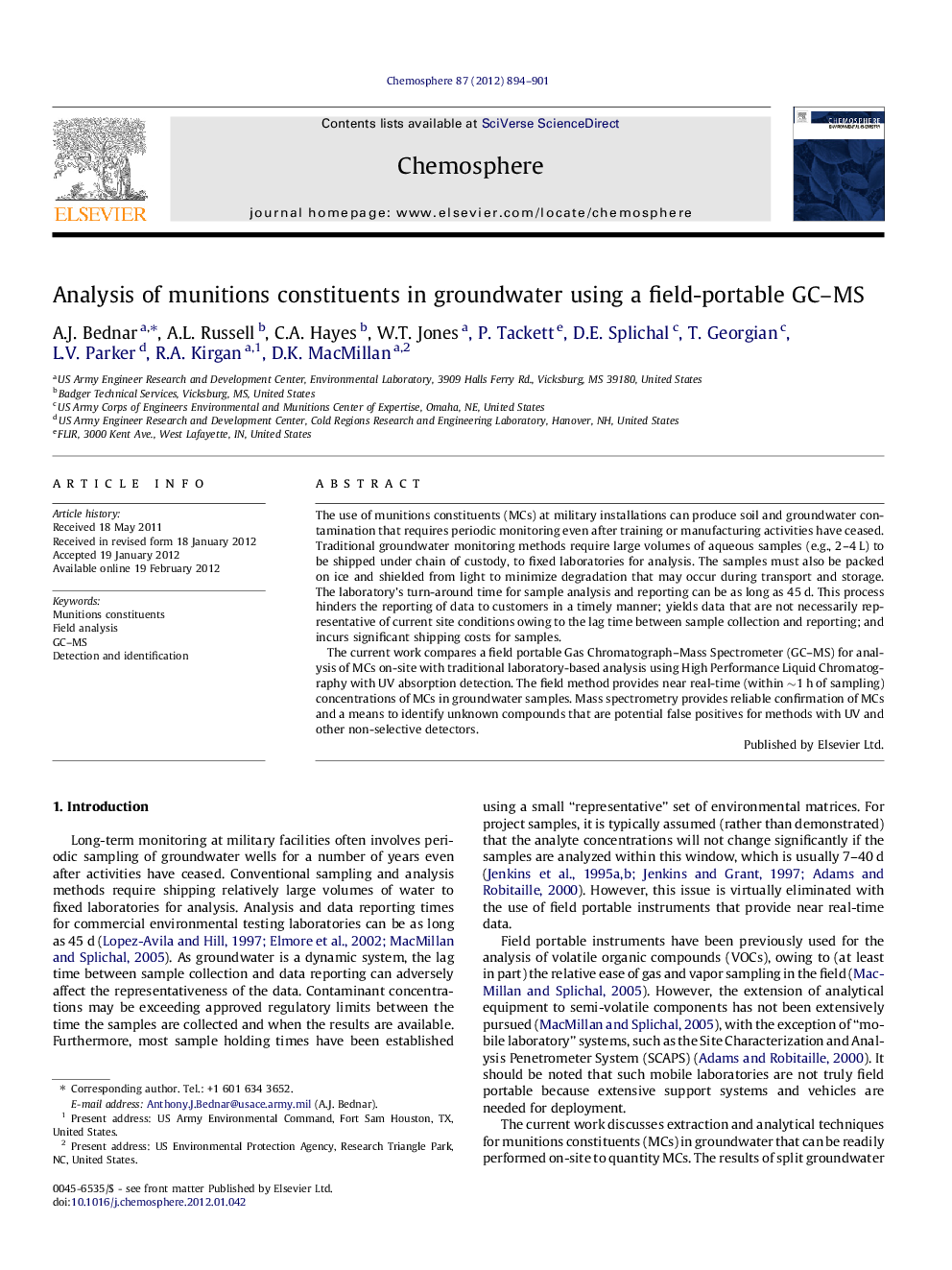| کد مقاله | کد نشریه | سال انتشار | مقاله انگلیسی | نسخه تمام متن |
|---|---|---|---|---|
| 4410376 | 1307541 | 2012 | 8 صفحه PDF | دانلود رایگان |

The use of munitions constituents (MCs) at military installations can produce soil and groundwater contamination that requires periodic monitoring even after training or manufacturing activities have ceased. Traditional groundwater monitoring methods require large volumes of aqueous samples (e.g., 2–4 L) to be shipped under chain of custody, to fixed laboratories for analysis. The samples must also be packed on ice and shielded from light to minimize degradation that may occur during transport and storage. The laboratory’s turn-around time for sample analysis and reporting can be as long as 45 d. This process hinders the reporting of data to customers in a timely manner; yields data that are not necessarily representative of current site conditions owing to the lag time between sample collection and reporting; and incurs significant shipping costs for samples.The current work compares a field portable Gas Chromatograph–Mass Spectrometer (GC–MS) for analysis of MCs on-site with traditional laboratory-based analysis using High Performance Liquid Chromatography with UV absorption detection. The field method provides near real-time (within ∼1 h of sampling) concentrations of MCs in groundwater samples. Mass spectrometry provides reliable confirmation of MCs and a means to identify unknown compounds that are potential false positives for methods with UV and other non-selective detectors.
Detection of munitions constituents by field GC–MS and quantitative comparison of results to laboratory based analysis.Figure optionsDownload as PowerPoint slideHighlights
► A field portable instrument quantifies environmentally relevant explosives concentrations in groundwater.
► Field results are statistically compared to traditional laboratory analysis.
► Quantitative comparisons demonstrate utility and limitations of the field technique.
► Potential interferants are identified using the field instrumentation.
Journal: Chemosphere - Volume 87, Issue 8, May 2012, Pages 894–901